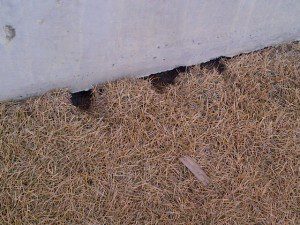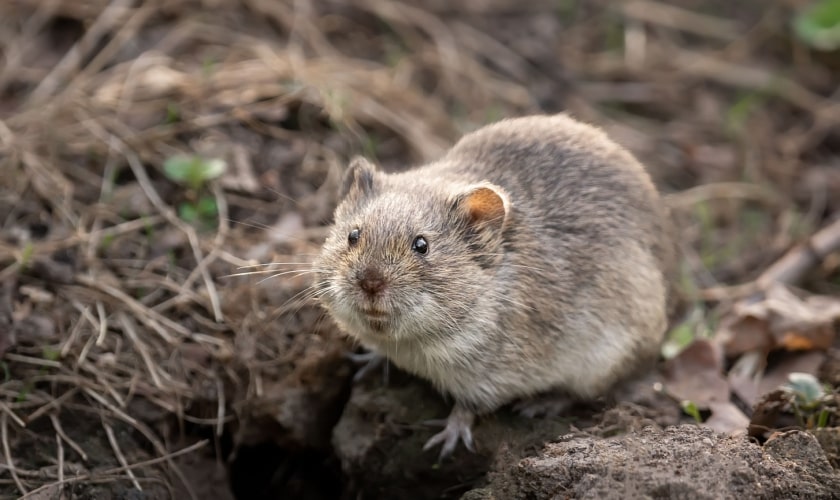Vole Control Tips to Maintain Your Lawn and Gardens
Comprehensive Overview to Efficient Vole Insect Control: Problem Recognition and Therapy Methods
In the world of reliable parasite control, vole problems position an one-of-a-kind difficulty that requires a strategic method. By checking out the subtleties of vole habits, understanding essential signs of invasion, and reviewing a range of control choices, one can establish a comprehensive strategy to fight these evasive bugs.
Understanding Vole Actions
Vole behavior is identified by their tunneling practices and rapid recreation prices, making them a tough bug to regulate successfully. These tiny rats typically produce complex passage systems underground, utilizing them for shelter, food storage space, and transportation. Voles are herbivores, eating a selection of plants, lawns, light bulbs, and roots, which can trigger considerable damage to gardens, orchards, and lawns. Their fast reproductive rate additional makes complex control initiatives, with women with the ability of generating multiple clutters in a solitary year, each including numerous spawn.
Comprehending vole habits is essential for efficient bug control techniques. By determining their burrow places, keeping an eye on feeding locations, and executing targeted control approaches, such as trapping or habitat modification, vole problems can be taken care of efficiently.
Indications of Vole Problem

Avoidance Strategies
Executing effective prevention techniques is crucial in decreasing vole problems and safeguarding plant life from their destructive feeding behaviors (vole control utah). To avoid vole infestations, it is essential to begin by eliminating possible food sources and shelter. Maintain turf and vegetation cut short, remove weeds and particles, and maintain a tidy yard or lawn to make the location less attractive to voles. Setting up obstacles such as equipment towel or below ground fence can also assist prevent voles from going into details areas. Furthermore, decreasing excess wetness by repairing leaky pipes and making sure correct drainage can make the environment less congenial for voles.
On a regular basis evaluating the residential property for indicators of vole activity, such as paths and burrow openings, is critical for very early detection and punctual action. Consider making use of catches or repellents purposefully put near their paths if vole activity is believed. Employing all-natural predators like owls or snakes can additionally aid keep vole populaces in check. By implementing a mix of these prevention gardeners, methods and home owners can efficiently safeguard their plant life from vole damage.
Non-Lethal Control Approaches
To successfully handle vole populations while focusing on gentle techniques, non-lethal control techniques offer sensible options for decreasing vole damage in landscapes and gardens. One effective technique is using physical barriers such as equipment towel or cable mesh to secure at risk plants. These barriers can be hidden a minimum of 12 inches deep and curved at a 90-degree angle to avoid voles he said from tunneling underneath. Furthermore, habitat adjustment can prevent voles by minimizing their favored food resources and concealing areas. Preserving a well-mowed grass, eliminating particles, and keeping vegetation trimmed can make the atmosphere much less enticing to voles.

Lethal Control Options
One effective approach for addressing vole invasions in gardens and landscapes includes the tactical use of dangerous control choices. When faced with an extreme vole problem that non-lethal techniques have failed to contain, applying lethal control measures ends up being vital. In general, when utilizing deadly control choices, it is vital to do so sensibly and in conformity with local guidelines to effectively handle vole problems.
Final Thought
Finally, efficient vole bug control calls for a detailed understanding of vole habits, recognition of indications of problem, implementation of avoidance methods, and utilization of both non-lethal and dangerous control techniques. By combining these methods, individuals can efficiently handle vole populations and protect their home from damage. It is essential to resolve you could try here vole infestations without delay to avoid more issues and minimize the effect on the surrounding setting.
Offered the intricate tunnel systems and quick reproduction prices particular of voles, acknowledging the indications of vole infestation ends up being necessary in effective pest control. One of the main indications of vole presence is the presence of surface paths or trails in grass or snow, normally regarding 1-2 inches broad, produced as voles take a trip between their burrows and food resources.To properly take care of vole populations while focusing on gentle techniques, non-lethal control techniques provide special info practical remedies for reducing vole damages in gardens and landscapes.One reliable approach for addressing vole invasions in landscapes and gardens entails the critical use of dangerous control choices. vole control.In final thought, reliable vole insect control needs a comprehensive understanding of vole habits, recognition of indications of infestation, application of avoidance approaches, and utilization of both lethal and non-lethal control techniques